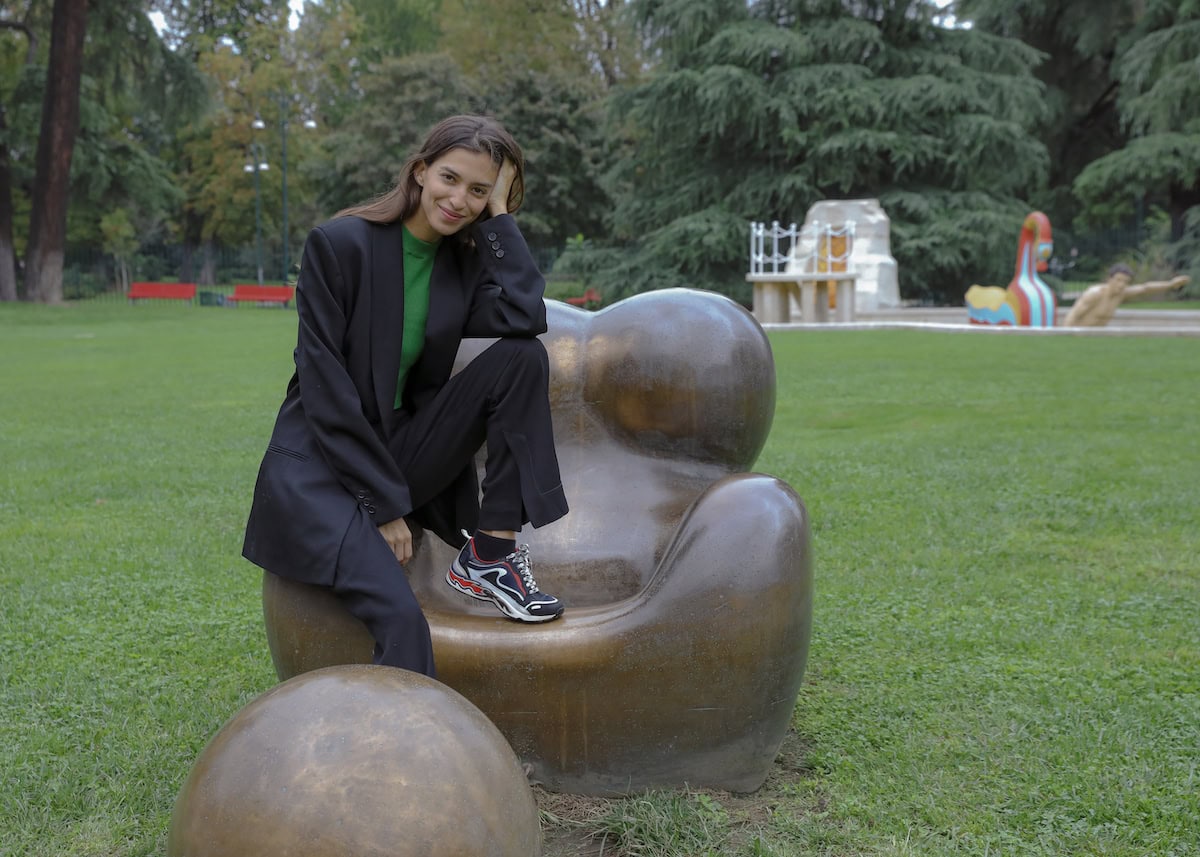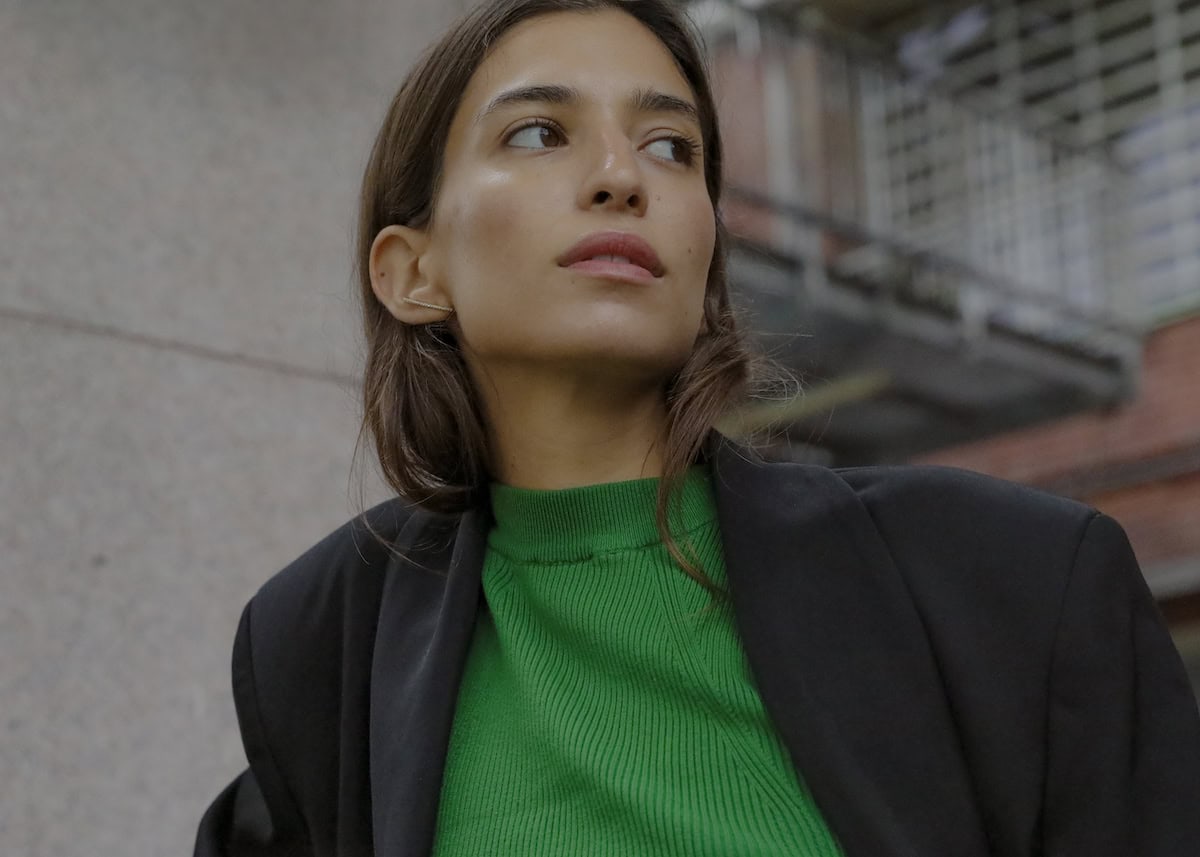In conjunction with Milano Fashion Week, Triennale Milano presented three special events devoted to the world of fashion, focusing on the themes, challenges and transformations that the industry is facing today. The talks focused on sustainability and innovation, tradition and modernity, and the possibility of establishing links with other expressive languages and potential influences. The events were curated by Cathy Horyn, journalist and fashion editor of The New York Magazine and The Cut, assisted by Marco Sammicheli, design, fashion and craft curator and Director of the Museo del Design Italiano of Triennale Milano, and Luca Stoppini, art director and member of the acquisitions advisory board of the Museo del Design Italiano.
On the occasion, C41 had a conversation with Marina Testino, speaker at The latest thinking on sustainability and innovation from all fronts panel discussion that took place on September 19, 2023.
Ilaria Sponda: Sustainability and innovation: how are these two concepts linked in the reality of facts?
Marina Testino: Innovation is necessary to truly put sustainability at the forefront of fashion, not only because things have been done a certain way for so long, but also because there are entirely new things to think about–such as transparency and traceability–that have not been considered until recent years. I believe this link between innovation and sustainability will get stronger as the industry continues to seek solutions and shift toward a more conscious framework. You can see this happening in many areas already. Innovation is driving a lot of change in the materials sector, with amazing fairs like Future of Fashion Textiles by the Sustainable Angle, where you can find a vast selection of material options. There is also a movement toward recycled textiles, along with emerging programs–such as the For Days Take Back Bag–that allow brands to collect, recycle, and reuse post-consumer waste.
IS: What contribution and approach are you bringing to the Triennale “Fashion Issues” panel discussions?
MT: Having been in the sustainable fashion space for seven years, I’ve seen the industry change in many ways. I’ve had the opportunity to see a number of innovations and solutions adopted during that time, which when I began, I wouldn’t have anticipated. Many of these–and brands or designers who implement them–I’ve chosen to highlight on my platform, @MarinaTestino, whether during an activation, for #SustainableFridays, or through my more recent endeavor, #GreenRooms Interviews, to name a few scenarios. I’ve also had the privilege of partnering with amazing organizations among the likes of Greenpeace, the Ellen MacArthur Foundation, and United Nations to aid in spreading awareness around the key issues and solutions developing within the industry. I am approaching the panel with all of these perspectives in mind. It’s so important to highlight the progress we have made, along with the brands and organizations who have made it possible. On the other hand, these strides in the right direction point to the areas where the fashion industry can–and needs to–collectively improve. As an advocate for sustainable fashion, you are always balancing yourself between uplifting the work that’s been done and calling for the solutions that we still need. Middling this ground, I am excited to see where my fellow panelists stand on either end of the issue. Problems don’t exist without solutions and vice versa–in that case, there’s always room to adapt and improve. That sentiment, at the very least, is hopeful. And I hope we can all learn from each other, as we each bring a unique perspective with different insights regarding how our industry can become more conscious as a whole. I look forward to lauding changes that have already been or are actively being made, but also using our joint knowledge and areas of expertise to acknowledge the industry’s shortcomings and point it in the right direction. All things considered, and in any case, the fact that we are having a discussion is a big win.
IS: What’s the power of activism in the quest for subverting fashion rules when it comes to sustainable development?
MT: I like this question, but I wonder if “subverting” is the right word. I don’t believe it’s necessary to undermine fashion, and its creative pursuits, in order to achieve a more sustainable end goal. I will be the first to admit that I love fashion, and for my entire life, I have found a wealth of inspiration within the industry and deeply respect the craft and creativity that is its lifesource. It’s very important to me that this point is not lost because I could not imagine myself or my career today without these influences. However, I will say, that ever since I first began my career with #OneDressToImpress, I feel like I have been going against the grain of industry norms. Doing so hasn’t always been easy. At the core of sustainable fashion, there is something rebellious. In many ways, dressing consciously goes against the messaging of the industry, its advertising, and the public personas we associate with it. It denies the constant pressure to keep up with the moment, trends, celebrities; it rethinks the stigma against outfit repeating, which conveys the idea that clothing is disposable and has a much shorter lifespan than it does–and should, deserves to–have in reality. Undoing this idea–and proving you could still love fashion while doing so– is what inspired #OneDressToImpress, which was my personal mission to prove that my love for fashion and my commitment to living consciously could coexist. Outfit repeating is cool, fun, sexy, and a valid form of self-expression. By wearing the same red suit for 60 days, I was able to show myself and others that this alternative way of thinking was not only possible, but can be really enjoyable as well. You don’t have to be against fashion to dress sustainably–in fact, it’s the complete opposite. It’s true, there is more time, effort, and intention that goes into it. But isn’t that true for any creative pursuit? And even if you personally do not see fashion as a creative outlet, I hope my work at least conveys that no matter what industry you are in, you don’t always have to play by the rules. At the end of the day, it’s your values that mean the most, and you should never sacrifice them for the sake of fitting in.
IS: How have you seen your work of raising awareness on conscious consumerism changing since you’ve started?
MT: I’ve definitely seen a shift. I’ve been part of the sustainable fashion movement for the last seven years. When I started, you would never find “sustainability” and “fashion” in the same sentence. It was as if a brand could either be sustainable or fashionable–there was no middle ground. That’s largely what motivated me to become an advocate for conscious fashion. I wanted to redefine the industry norm by showing that these two worlds don’t have to exist exclusively–that they can truly complement each other. Since then, it’s been really inspiring to see this sort of thinking become more and more mainstream. Just look at major brands today. Many of them are either trying to do something or actively doing something to incorporate sustainability into their business models. It’s become common for brands to have entire departments devoted to sustainability, and brands are becoming more transparent about their efforts to become more sustainable, whether they are investing in material research, creating more conscious packaging, or restructuring their supply chain. Consumers are changing too. Increased access to information around these topics have inspired a lot of positive changes. Education is key. I’ve found that the more consumers know about the conscious decisions they can make, the more they want to make them. People, especially in younger generations, are becoming more aware of brands and their values, practices, materials–and are demanding transparency about these things, which is amazing to see.
IS: You’ve been living between New York, London and Barcelona. How do you see these cities different in terms of sustainability awareness and supporting networks actually making a difference?
MT: I love this question! I’ll start with London. As long as I can remember, there have been such cool vintage shops on every corner. Secondhand shopping there is so easy and fun. They also have some of the best clothing rental options in the world. Companies like Hurr Collective, Rotaro, Cocoon Club, My Wardrobe HQ, are such amazing resources in London. New York also has great conscious options. You have access to high-end consignment with The Real Real. Or if rental is your thing, there’s Rent the Runway, which is the perfect alternative to buying new when you want to try out a new trend or only need a look for a particular event. These two platforms were both founded in NY and were some of the first of their kind to make secondhand and circular options openly accessible in and outside of the fashion world. In Barcelona, you have a lot of small, sustainable brands leading the way toward more conscious models. They are doing a great job of showing what’s possible in terms of sustainability, which is setting an important example for the larger brands there who still have some catching up to do.
Marina Testino is a Creator, Connector, and Strategist in the space of sustainable fashion and conscious consumerism. Her connections and strategies help fashion brands and consumers alike move toward a needed reset for the fashion industry.On top of this, Marina is known for her activations on social media, such as #OneDressToImpress, where she took a stand against overconsumption and the stigma of “outfit repeating” by wearing the same red suit for 60 days.


